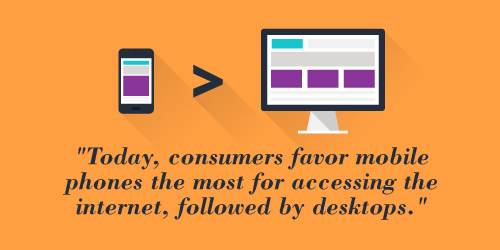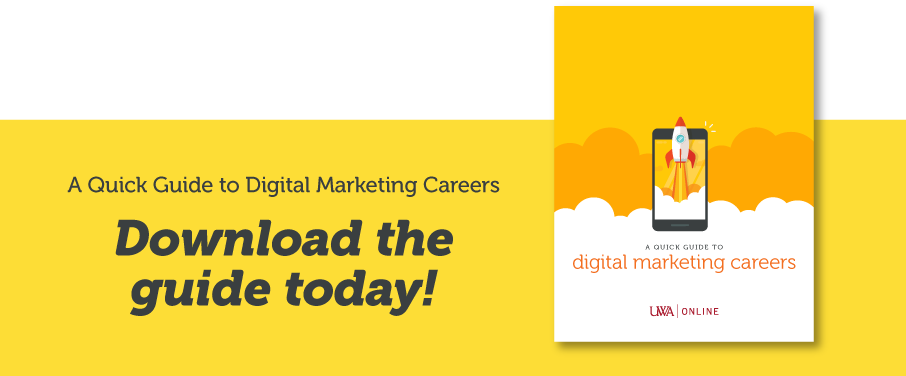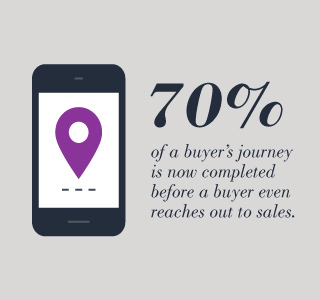The art of enticing customers is an old one. What’s new is its medium. The progress of technology combined with the globalization of commerce has led to the rise of digital marketing, or the practice of enticing consumers through a host of electronic platforms. This industry is a rapidly growing one and has been for some time. In understanding the history of this field, aspiring digital marketers can enter it with the skills they need for future success.
A Brief History of Digital Marketing
According to the Digital Marketing Institute, a succession of technological developments at the turn of the 21st century set the stage for a modern and massive digital audience. Of these, the internet, big data and smartphones are considered the most significant.
The Internet
Although the conceptual origins of the internet date back to the 1960s, the World Wide Web was created by scientist Tim Berners-Lee in 1989. His initial goal was to connect computer networks at his employer Conseil Européen pour la Recherche Nucléaire, more commonly known as CERN. In 1991, the first individuals outside this organization were invited to join. In 1994 Netscape, the first successful mass-market browser, was released. In the two years after Netscape entered the public sphere, the number of people using the web grew from 16 to 70 million people.
The ballooning growth of internet users meant a changing digital landscape. The use of email, advanced search engines like Yahoo! and Google, and the creation of e-commercial sites like Amazon and eBay paved new ways for companies to reach consumers. Email became a marketing tool, search engines a way for customers to find products. The earliest SEO techniques were also introduced, which included keyword stuffing, excessive tagging, and the use of backlinks.
Big Data
With the increase in digital activity came new developments in data recording and storage technology. Online consumer activity could now be recorded, stored, and analyzed. This proved invaluable to companies, as it provided insight about who their customers were and how best to connect with them. The rise of social media sites such as LinkedIn, MySpace, Facebook and Twitter allowed big data to grow even larger, as people posted more and increasingly personal information on digital platforms.
Ultimately, big data allowed companies to track human behavior patterns, create precise marketing efforts, and even offer predictive analytics. This allowed them to connect with customers on a more personal level than ever before.
Smartphones
Early cell phones made their first appearance in the 1970s and continued to evolve throughout the end of the 20th century and beyond. However, the first venture into smartphone technology is considered the BlackBerry. Released in 2003, the device allowed users to email through their devices for the first time and was favored by companies and governments for the security of its network.
In 2007, Apple released the iPhone. With this development, the true smartphone era had begun, allowing marketers to reach consumers more precisely, directly and for longer periods of time. Smartphones subsequently led to a further rise in social media use, something which increased marketing opportunities even further. In 2011, Americans engaged with mobile media for an average of 46 minutes. In 2017, this number was 258. Smartphones are now the number one digital device for internet use in the United States.

Digital Marketing in Today’s Present Landscape
Today, digital marketing is shaped by the availability of a broad and wide digital audience. According to research at Smart Insights:
- The number of internet users worldwide (as of 2018) has exceeded 4 billion.
- The number of social media users worldwide (as of 2018) is around 3.2 billion
- The number of mobile phone users worldwide (as of 2018) is around 5.14 billion.
Each of these numbers reflects a distinct rise in usership from previous years.
Additionally, today’s digital marketing landscape is influenced by the following trends:
Buyer Behavior
- 70 percent of a buyer’s journey is now completed before a buyer even reaches out to sales.
- A decided increase with personal sharing is here, encouraged by digital media. This means that digitally native customers, such as millennials and members of Gen Z, value personalization in their digital experience.
Formats Used to Reach Customers
- Today, consumers favor mobile phones the most for accessing the internet, followed by desktops.
- Millennials have been found to currently interact with an average of three different types of screens. Gen Z, in contrast, interacts with five: smartphones, TVs, laptops, desktops, and iPods or iPads.

Project Types
- Companies now increasingly rely on agile marketing within the digital sphere. Agile marketing measures how efficient an organization is at meeting its marketing goals. It emphasizes the speed of development of new projects and drives to capitalize on in-the-moment advertising opportunities.
- Marketing now relies on finding and sharing truths, rather than creating and selling a myth. This is due to the increasing ease with which customers can research and compare products.
- Improvements in SEO mean that keyword stuffing and using spam backlinks are no longer effective. Today, they are replaced with high-value content.
- Despite the rise of digital marketing, old tried-and-true marketing mediums are still found largely effective. Agencies still commonly use print ads, television, and radio to advertise their products and services.
Together, these facts paint a picture of today’s digital landscape: a rapidly changing place, where customers value quality content that is immediately available on multiple digital platforms.

The Future of Digital Marketing
As technology continues to grow and develop, it is reasonable to assume that digital marketing will do so as well. From what we know of today’s marketplace, we can predict where the future of the industry might lead. Forbes predicts a few immediate trends:
- Increased emphasis on integrated global marketing. This method allows consumers to make connections between multiple sources of content, such as a blog and an email regarding different facets of the same topic.
- The use of cohesive marketing technology stacks. Digital marketing is poised to integrate various technologies in a more unified and consistent fashion.
- Companies will increase their use of data mining and deep analytics in order to maximize coordinated exposure in as many digital channels as possible This is called “omnichannel marketing strategy”.
- There will be an increased focus on account-based marketing.
Additional trends recognized by CMO.com by Adobe include:
- Steady, slow growth in the number of Internet users
- A continual increase in digital video viewing
- Video and audio sources generate most consumer Internet data traffic, at least in the near future.
To succeed, tomorrow’s digital marketing companies will require a workforce with the education and skills to meet these future challenges and stay at the forefront of the industry.
Opportunities in Tomorrow’s Digital Marketing Workforce
A changing digital landscape means a changing professional one as well. Tomorrow’s marketers need the education and knowledge required to enter any number of current or future roles in the field. Some include:
- Art director
- Copywriter
- Social media manager
- Media relations specialist
- Research analyst
- Advertising account manager
- Public relations manager
- Media buyer
- Strategic account planner
Earning a degree sets the stage for tomorrow’s careers, and an online bachelors in integrated marketing communications from the University of West Alabama is where you should start. Our online B.A./B.S. in Integrated Marketing Communications can be customized, covering topics such as integrated marketing communications, graphic design or sports communication. We also offer an Master of Arts In Integrated Marketing Communication for those looking to advance their career in marketing. Earn your degree fully online, at one of the most affordable institutions in the state.
Additional Sources: Forbes, The Internet Society
